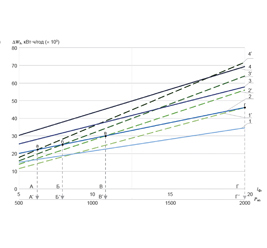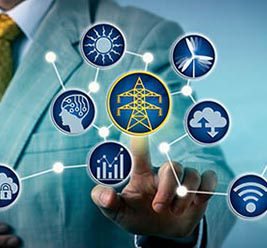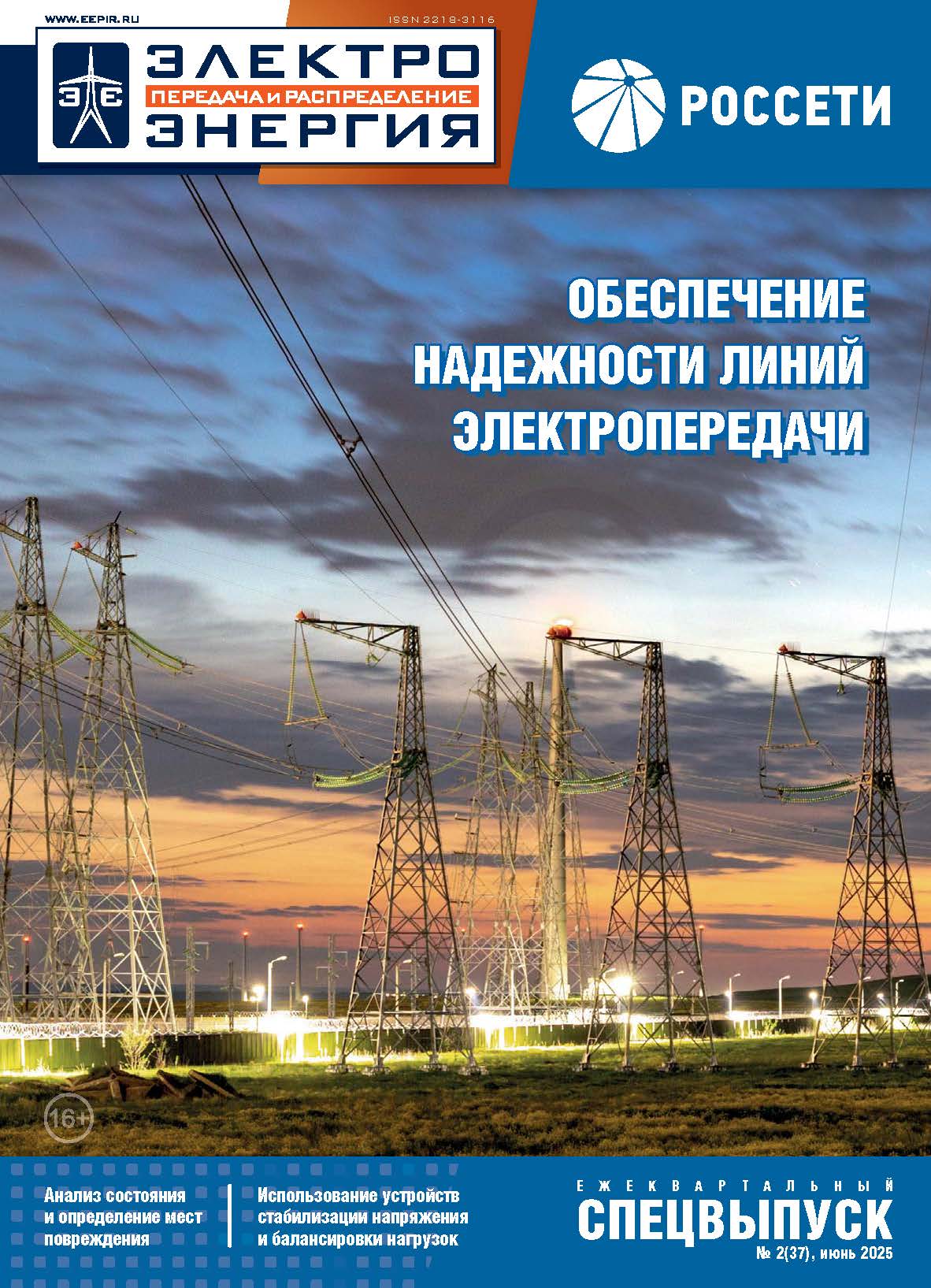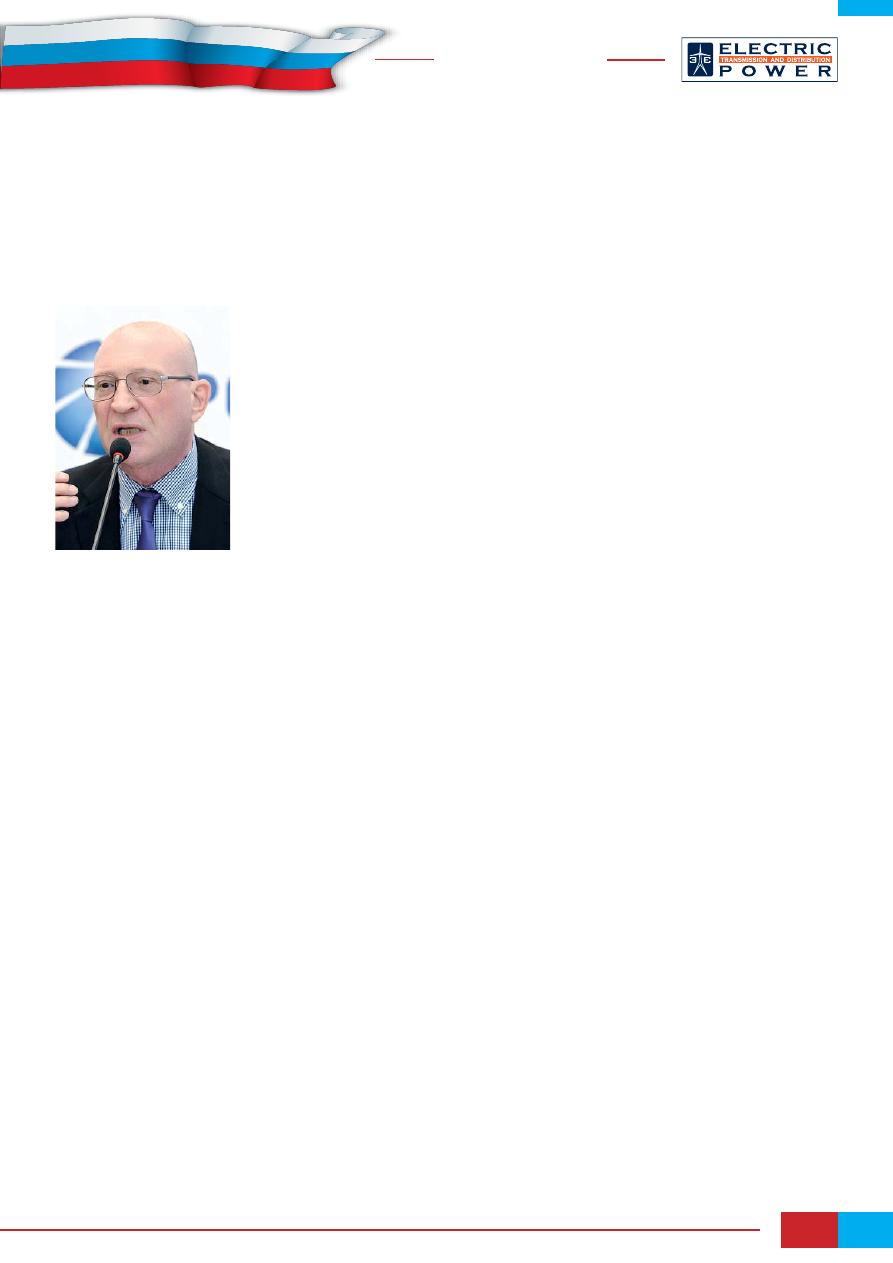
www.eepr.ru
41
Integrated Technical Regulatory
Framework at the Heart of Electric
Power Industry Development
Alexander DZHINCHARADZE (Александр Джинчарадзе),
Chairman of the Technical Committee for Standardization
in the field of electric power industry TC 016,
Professor, Doctor of Technical Sciences
TECHNICAL REGULATORY
FRAMEWORK AT PRESENT
Nowadays Russia is one
of the world’s major produ-
cers of electric power (more
than 230 GW). The uni
fi
ed
energy system (UES) of Russia includes about 600 power
stations with generation capacity of over 5 MW each.
However, notwithstanding such a great capacity of the
energy system, Russia’s GDP energy intensity amounts
to 0.4 tons of fuel equivalent per USD1000 versus the
average world index of 0.19 tons of fuel equivalent,
while the energy intensity of products is 3—4 times as
high. Comparing to developed countries, the structure
of Russian GDP is characterized with a lower share of
services (including transport and communications) and
takes a traditionally modest part in the domestic household
sector of economy, according to the level of per capita
power consumption. Electric power available per worker
in processing industry of Russia is 29.3 thousand kWh, in
the USA — 45.9, in Finland — 98.3.
The wear-out rate of heat generating facilities and heat
systems of thermal power stations continues to increase.
About 68% of heat supply networks have been in operation
for more than 25 years.
The electric power industry implements a signi
fi
cant
number of outdated and redundant technical regulatory
documents and standards developed both in Soviet time
and the operating period of JSC “RAO “UES of Russia”.
Their status is ambiguous as some documents ful
fi
ll a role
of recommendations, while others have not undergone the
established procedures for incorporation into the legislation
of the Russian Federation. Thus, the issues of legitimacy of
industry-speci
fi
c technical regulatory documents (TRDs),
having no mechanism of adopting general industry
standards and
fi
nancing of their development and no TRDs
establishing requirements to reliability, safety and energy
ef
fi
ciency of electric energy systems and electric energy
facilities are quite urgent at present. These issues are of
special importance in connection with establishment of
market relations, Russia’s joining WTO and participation
in integration processes in post-Soviet regions (CIS, the
Customs Union and EurAsEC).
The problems become worse with Russia’s lagging
behind the European Union and USA in the
fi
eld of
standardization: many Russian standards are more than
30 years old, the degree of harmonization of national
standards in the
fi
eld of electric power industry with
international and European standards is, on average, 24% (in
Germany it is over 90%; in EC — over 70%). The industry
has no system of technical regulation and standardization.
There is no coordination of works on creation, integration
and supervision of compliance with TRD requirements. The
TRD structure is imperfect. Work on establishing a modern
set of terminological standards adopted in the world practice
hasn’t still been completed. Insuf
fi
cient attention is paid to
development of national standards, regulations and rules
for UES design, construction, control and operation. There
are no modern standards for implementation of devices
and instruments in test and measurement procedures at all
stages of the system’s lifecycle. The existing low level of
standardization negatively affects UES control, technology
discipline and responsibility, which leads to accidents and
failures in the system’s operation.
At present the electric power industry primarily imple-
ments standards of organizations (SOs), with each power
company developing its own SO with no regard to the in-
dustry’s general interests. National standards which could
bridge the gap are almost never developed, which increases
the risks of accidents and failures of UES equipment. A tar-
get program of standardization in the direction of system
intellectualization, integration of innovative products, im-
plementation of uni
fi
ed and standard processes by means of
network modeling hasn’t been developed yet. All this has
negative consequences for industry management, synchro-
nization of works, cost increases and extension of terms for
works completion. The industry has still not integrated ef-
fective sets of standards: PDPPS (product development and
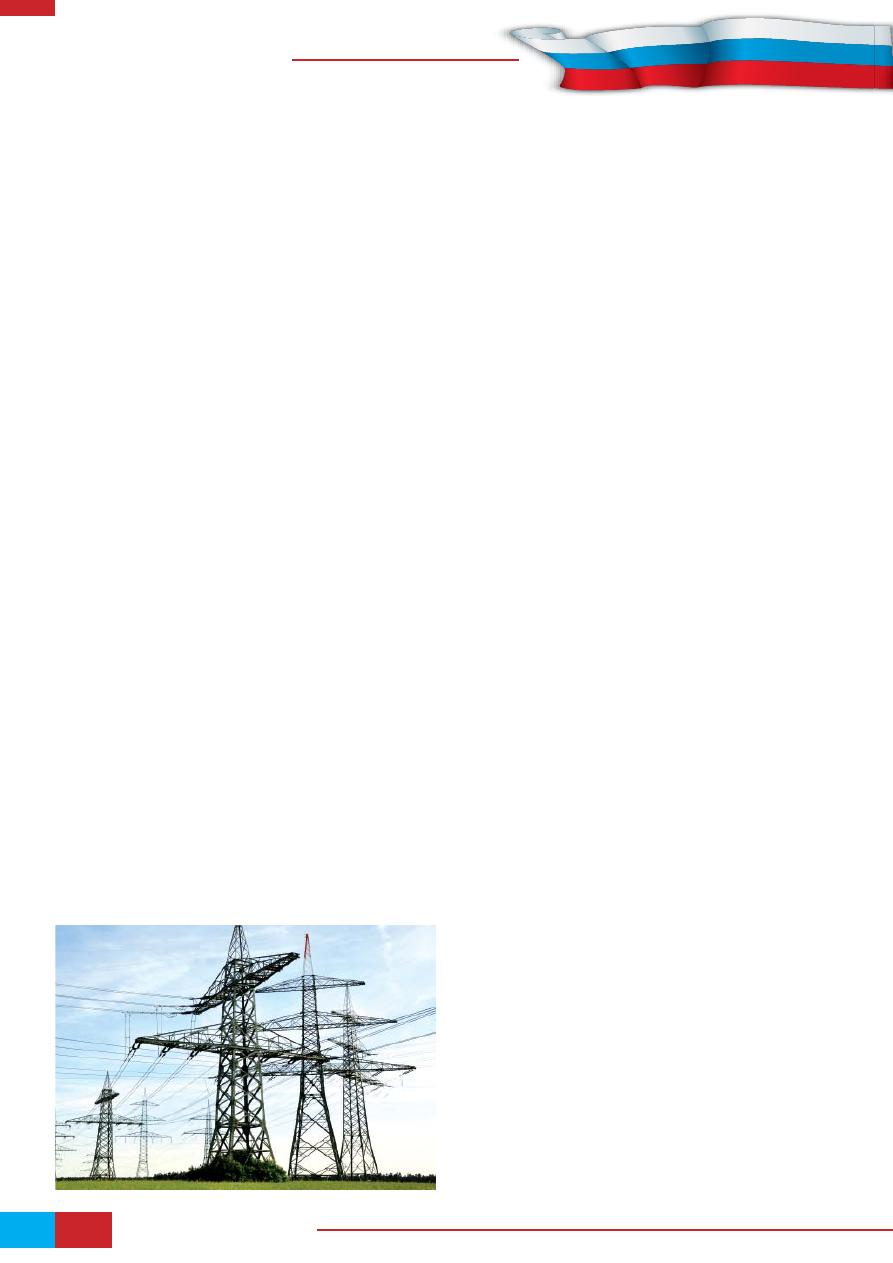
DIGEST, February, 2014
42
Guidelines
pilot production system), CALS-T (information support),
which are widely implemented in defense sectors of indus-
try. One can state that the industry has no due regard to is-
sues of metrological support, which is essential for ensuring
reliability, quality and safety.
EU STRATEGIC POLICY OF SUPPORTING INNOVATIONS
THROUGH STANDARDIZATION
European standardization organizations (CEN,
CENELEC, ETSI) consider standardization to be an inte-
gral part of scienti
fi
c research and developments:
• results of research projects are invaluable for standard-
izers;
• research projects should be provided with information
about standards that already exist or are in the process
of development;
• standardization-related activity itself can give rise to the
need in additional research (for example, developing re-
quired methods of tests and measurements of products).
The Technical Boards of European CEN and CENEL-
EC have created the working group STAIR. This joint
strategic working group deals with complex issues of
standardization, innovations and research, in order to:
• provide recommendations in the
fi
eld of the strategy
for CEN and CENELEC Technical Boards concerning
the integrated approach to scienti
fi
c research, innova-
tions and standardization;
• take into account the uniformity of the European Com-
mission’s policy in the
fi
eld of scienti
fi
c research, in-
novations and opportunities for making standards as
effective as possible;
• offer decisions for transferring results of research pro-
jects into standardization providing the following:
○
standards enable popularizing innovative products
and services, while winning trust of industrial users
and consumers, and make a signi
fi
cant contribution
to establishment of a large-scale market;
○
standards provide consistency and compatibility of
products and services, due to which end users ben-
e
fi
t from price reductions;
○
standards raise the quality of products, enabling
implementation of advanced technologies and
methods, while simultaneously considering safety
and ecology aspects;
○
standards support export through elimination of
technical barriers in trade on the single European
market and on a global scale;
○
European standards support European legislature.
Referring to standards, the industry can meet legisla-
tive requirements related to launching high-quality
products onto the market;
○
standardizers establish general rules not only for
providing conformance of products to safety and
ecology requirements, but also for the companies
to use these purposes as basic components in the
fi
elds of safety, protection of consumers and envi-
ronment;
○
standards provide access to 500 million EU con-
sumers. European standards conform to interna-
tional standards (ISO, IEC, ITU telecommunica-
tions sector) to the maximum possible extent.
In this connection standardization is the best means
for rapid launch of innovative technologies and products
onto the market; it simpli
fi
es the lifecycle of an invention
starting with development of its idea and ending with its
introduction onto the global market; it is an essential tool of
innovative business, scienti
fi
c research and developments.
Standardization is particularly effective in adapting the
new knowledge acquired during research to market needs
in the following
fi
elds:
• nomenclature/terminology and classi
fi
ers;
• metrology;
• measurements and methods of reliability, quality and
safety tests;
• energy ef
fi
ciency and resource saving;
• transformation of products, processes and systems
with due regard to intellectualization;
• functional and technical consistency.
In respect of the adopted new technologies, the stand-
ards which are supported by innovation-fostering policy
(with due regard to terms of intellectual property) are key
tools for ensuring technical applicability and market ac-
cess. Thus, standards transfer innovative technologies into
merchantable products and offers.
Research carried out in a number of EU countries
(Germany, France, Great Britain) showed that,
on the national economy scale, the joint effect of
conducting works on standardization with due regard to
implementation of international and European standards
(ISO/IEC/ CEN/CENELEC) makes up more than 1%
of the gross domestic product (GDP). Experience of
foreign EU companies shows that each euro invested in
standards gives pro
fi
t of up to 20 euros. In Great Britain
the contribution of technological transformations in GDP
amounts to about 50%, while the contribution of standards
directly in technological transformations amounts to
more than 25%. According to experts, Germany derives
standardization-related economic bene
fi
t of about
18 billion euros annually.
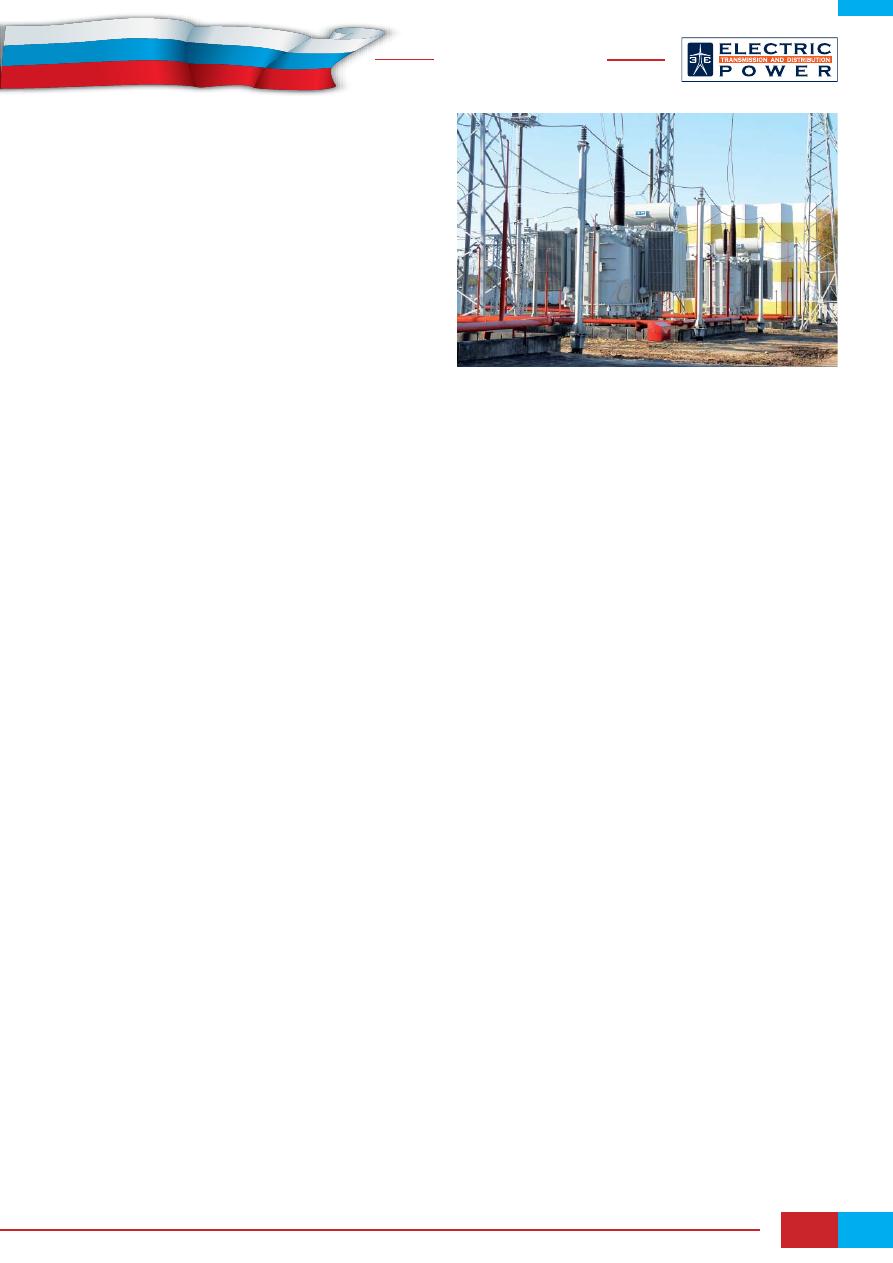
www.eepr.ru
43
HARMONIZATION OF STANDARDS AS AN EFFECTIVE
PATH TO UES DEVELOPMENT
Russia’s joining WTO, establishment of the single eco-
nomic and information space within the Eurasian Union and
CIS, development of economy of regions in the Far East
and on western borders of the Russian Federation create
new opportunities for business. In this connection, creating
mechanisms and tools of state support for establishing the
modern regulatory framework of the industry is of special
importance. Facilitation of processes of development and
implementation of Russian national and sectoral standards,
harmonized with international and European standards, will
allow the level of standards’ harmonization to increase to
70% by 2020 and, correspondingly, Russia’s GDP energy
intensity to decrease by more than 5%.
It should be emphasized that, in conditions of Russia’s
membership in WTO and establishment of the single
economic and technology space in CIS and EU, there
should be development towards establishment of a single,
continent-wide electric power market, i.e. introduction,
among countries of the European Union, Russian Federation
and CIS, of a market-based effective load management
synchronization mechanism using standards, regulations
and rules harmonized with international and European
standards. Analysis showed that ful
fi
llment of such aims,
fi
rst of all, requires implementation of measures on:
• establishment of a single basis of integrated and har-
monized statutory and technical regulations and stand-
ards, including terms and de
fi
nitions, market rules of
electric power trade development, competition and in-
vestments based on non-discriminatory access to grids;
• integration of systems and programs of development
of CIS-EU grid infrastructure with regard to ecology
requirements and implementation of low-carbon power
generation and renewables;
• creation of a common system operator;
• creation of conditions for mutual investments into devel-
opment of grid infrastructure, construction and moderni-
zation of power generating facilities in Russia and EU;
• activation of work of Russian technical standardiza-
tion committees and their participation in international
technical standardization committees in ISO and IEC;
• development of cooperation between JSC “Russian
Grids”, JSC “SO of UES”, JSC “FGC UES”, on the
one part, and ENTSO-E, on the other part;
• establishment of a joint regulatory legal and technical
centre (Centre) promoting the development of a uni-
fi
ed transcontinental sustainable energy system.
Herewith, the main tasks of cooperation of Russia, CIS
and EU in the electric energy sector are ensuring UES reli-
ability, ef
fi
ciency, quality and safety and responsibility of
electric power suppliers in respect of consumers. Such a
single integrated policy based on mandatory implementa-
tion of uniform statutory acts, technical regulations, en-
suring compliance with standards requirements will en-
able effective ful
fi
llment of the tasks set, and in Russia —
great reductions in energy intensity of GDP and products.
INTEGRATION AND SYNCHRONIZATION OF PRODUCTION
PROCESSES
In the world practice UES primary development is
carried out towards its intellectualization in all aspects
and at all stages of production and engineering processes,
including generation, transmission, distribution and
management with implementation of a complex automated
integrated functional system, including monitoring,
metering, supervision, analysis, self-diagnostics,
revealing deviations and self-control of indicators. In this
case the lifecycle is described as an aggregate result of
processes taking place from determination of needs of the
society (consumers) in innovative (or modernized) system
products and services to transition to a higher level of UES
development caused by development of the society and
changes of generations of equipment and technologies.
As it was demonstrated in a number of research papers,
one of the essential and fundamental features of UES in-
tellectualization is integration of standards in the
fi
eld of
electric-power industry with standards of information and
telecommunications technologies, communications and
metrological support. Without this integration it is impos-
sible to create a technology platform — a regulatory tech-
nical con
fi
guration (architecture) of UES with real-time
synchronization of processes throughout all stages of the
system’s lifecycle (from R&D, construction and operation
to transition to other scienti
fi
c technology generations of
development of devices, equipment, substations and the
system, as a whole).
It should be underlined that at present works on
standardization in the
fi
eld of Smart Grid in Russia involve
specialists of 16 technical standardization committees (TCs),
while there are 27 TCs in the International Electrotechnical
Commission (IEC). EU countries have already developed
many directives and regulations binding EU countries to
ful
fi
ll requirements of standards speci
fi
ed in the directives
and regulations. IEC has a working group (IEC SG) made
of experts from 14 countries who develop sets of standards
including protocols of interaction of devices in Smart Grid
systems. Therefore it is necessary to use the experience of
international committees and EU and,
fi
rst of all, to carry
out harmonization of national standards with existing
international and European standards. A common trend of
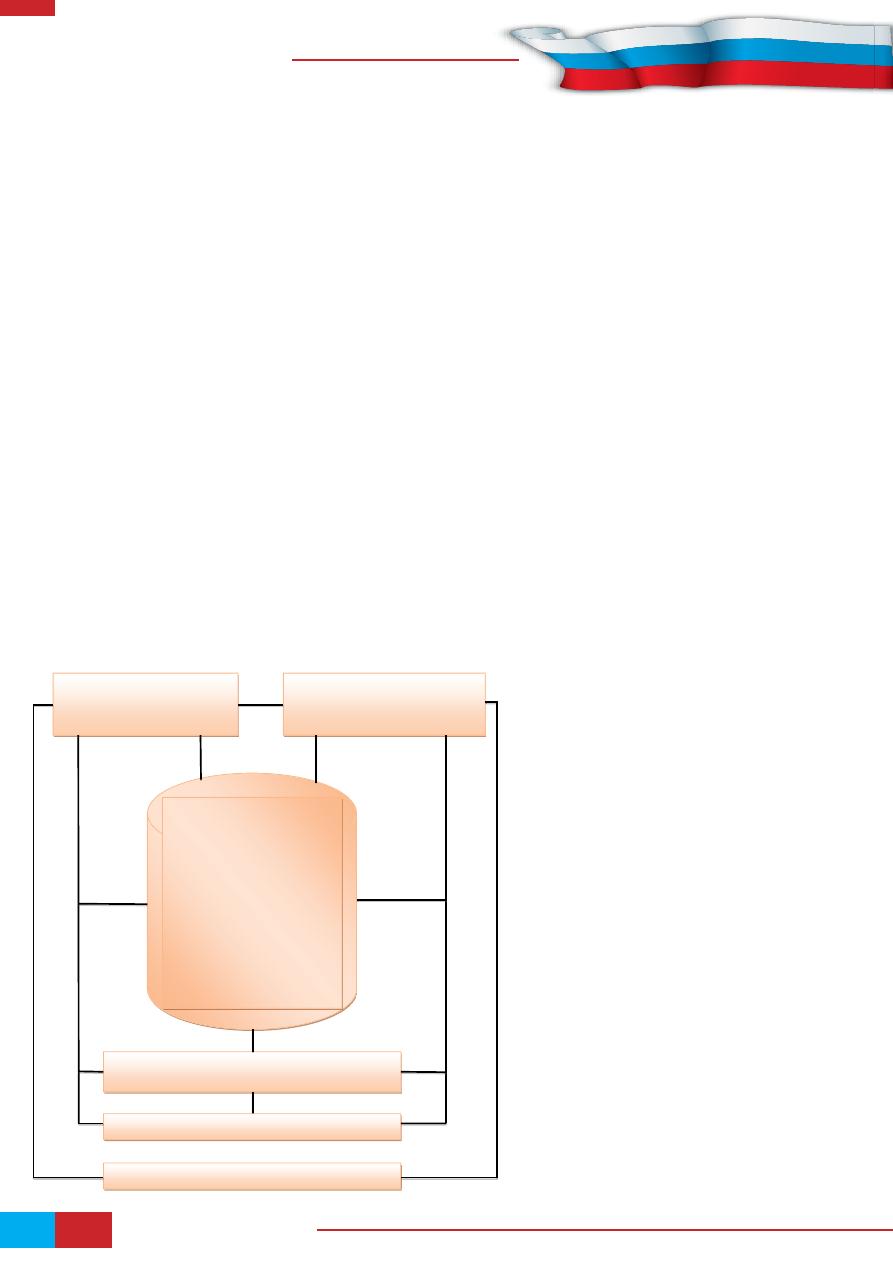
DIGEST, February, 2014
44
Guidelines
UES intellectualization is development of sets of standards
and other TSDs, integrating a multitude of smart digital
computational, communications technologies and electrical
architectures, as well as related established regulations and
procedures, processes and services, which in functional and
informational aspects should be compatible, synchronized
in processes of design, construction, modernization and
operation of UES components. Such a smart system will
differ from others in
fl
exible integration, self-diagnostics
and self-control; it will be able to re
fl
ect technical, social and
organizational needs in a sustainable, information-protecting
smart grid with regard to con
fi
dentiality of consumers,
who should be provided with an opportunity of collecting,
metering, analyzing, implementing, processing, storing,
communicating and deleting their information, which will
enable rendering various complex services. Provision of
such services requires comprehensive integrated standards
relating to safety and protection of personal data. At that
we should mention that the con
fi
guration (architecture) of a
smart grid in accordance with the lifecycle should provide
innovations in a way for solutions launched, for example,
in 2019 to interact with devices of the previous generation,
for example, of 2014, with regard to results of adequate
analysis and monitoring of UES operation.
The practice of designing, building, operating, moderniz-
ing and developing UES and its facilities, in particular, dem-
Fig. 1. Integrated system for synchronization
of production processes in UES
Electric Energy System
Indicators,
Production Processes,
UES lifecycle
System of Information Technologies
Indicators,
Production Processes,
UES lifecycle
BASE OF REGULATORY
AND REFERENCE
INFORMATION
Programs
Schedules
Plans
Indicators
Deviations
GOST R, regulations, rules, metrological support of
production processes throughout the lifecycle
Construction processes
Synchronization of works of UES operation
onstrates that one of the essential components of economic
ef
fi
ciency is synchronization of construction and engineering
works with regard to required metrological support through-
out the lifecycle of UES development and modernization,
which can be implemented by means of corresponding inte-
grated sets of standards and measures:
•
fi
rst of all, to develop and create, in the
fi
eld of electric
power industry, an effective framework of statutory
and technical regulations and rules based on national
standards harmonized with international and European
ones with regard to Russian peculiarities;
• secondly, to systematically improve the following reg-
ulatory methods based on implementation of national
standards:
○
monitoring of metal structures and concrete
structures with use of modern regulatory methods
of measurements and analysis;
○
testing of UES equipment and facilities;
○
regulatory scheduling of repair and modernization
works;
○
regulatory technical and economic assessment of
situations and risks;
○
implementation of effective sets of standards of
PDPPS, CALS-T, network modelling, etc.
Implementation of these measures will require intro-
duction of corresponding amendments into a number of
laws and by-laws of RF, including:
• the Federal Law “On Technical regulation” of
27.12.2002
№
184 as amended in 2002—2012;
• the Federal Law “On Electric Power Industry”
of 26.03.2003
№
35 as amended in 2012;
• the Federal Law “On the Federal Contract Sys-
tem”
№
44 with the aim to establish mandatory
requirements to reliability and security of the
system, electric power quality, energy ef
fi
ciency
similarly to the way it was done in USA Federal
Laws and EU Directives and regulations;
• monitoring information should be orderly kept
in a base of standards and regulatory data with
the aim of storing and analyzing statistics and
implementing it in calculation of risks with the
use of respective regulatory technical methods.
Herewith, one should lay emphasis on an im-
portant direction, which is creating integrated
sets of standards for analysis and assessment of
risks throughout the system’s lifecycle, particu-
larly for risk assessment at the stage of UES op-
eration with the aim of solving problems related
to security of development of smart grids and
satisfying energy consumers’ needs with regard
to economic ef
fi
ciency.
Analysis showed that modern integrated sets
of national standards should,
fi
rst of all, include
standards which establish:
• rules and regulations of technology design,
construction and operation of facilities with de-
velopment of type-design practices and uni
fi
ca-
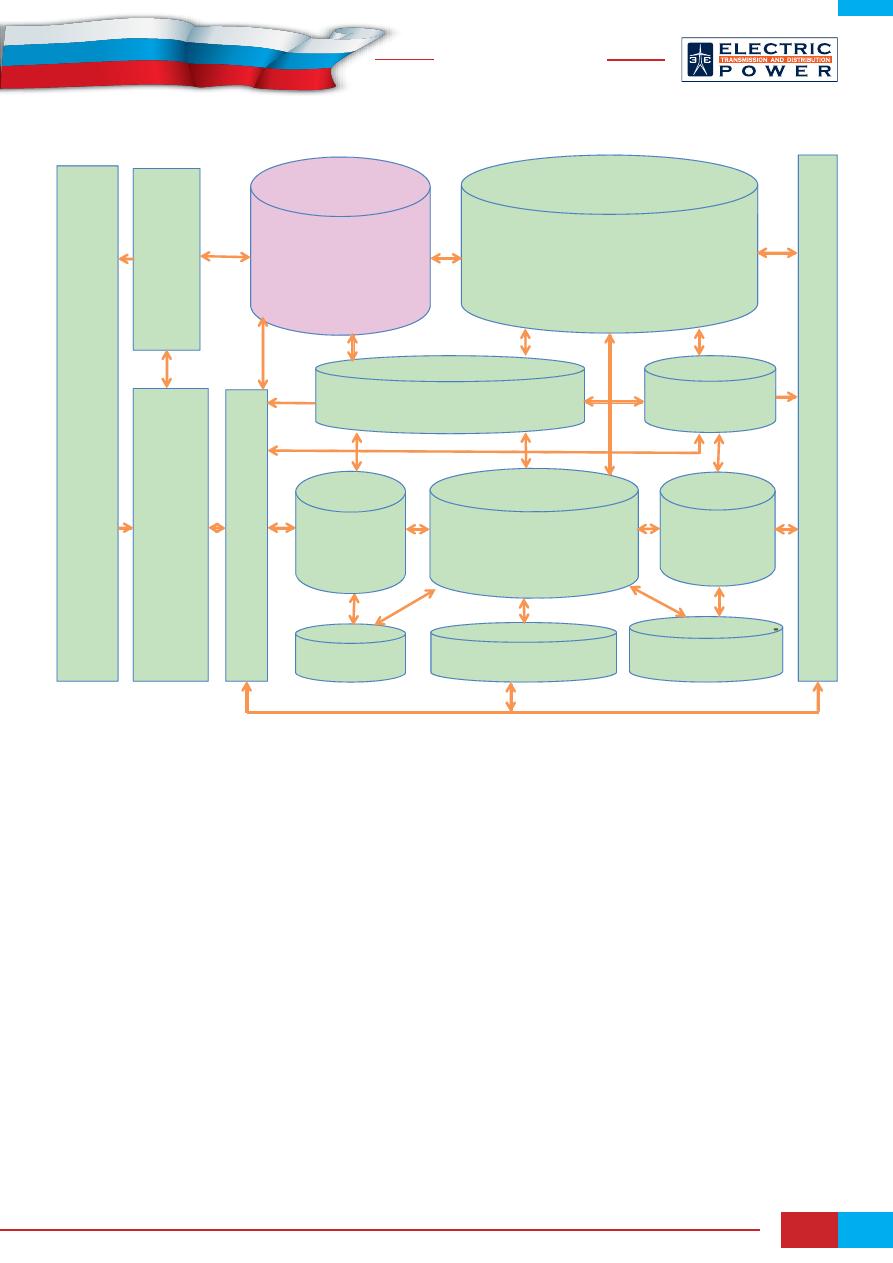
www.eepr.ru
45
tion of technical solutions, synchronization of organi-
zation of construction and modernization of facilities
with regard to supplies of complex technical products
in plant-tested large-scale units;
• rules and regulations of UES dispatch control;
• rules and regulations of scheduling and conducting
repairs of facilities based on regular monitoring and
diagnostics of the condition of facilities, as well as
prompt situational analysis:
○
methods of testing facilities, devices and equipment,
particularly during acceptance tests of public
procurements;
○
rules and regulations of public procurements
meeting mandatory requirements of technical
speci
fi
cations of Russian consumers in respect of
reliability, quality, energy resource saving, safety
and environmental performance;
○
rules and regulations for safety, reliability, quality,
energy ef
fi
ciency, resource saving and ecological
requirements of construction and operation of
facilities and UES, on the whole;
○
automation systems of control of technological
processes with the use of international and European
standards.
Advanced modern and effective integrated sets of
standards should include standards for combined electric
power and heat production and speci
fi
c fuel consumption
of energy facilities.
MANAGING UES DEVELOPMENT
BY MEANS OF INTEGRATED REGULATORY
KNOWLEDGE BASE
The above mentioned problems and their solutions
also concern the public utilities sector, the share of which
amounts to about 50% of all electricity consumption. De-
spite the fact that the volumes of residential housing con-
struction in recent years have sharply increased, the tariffs
for the population have correspondingly increased and
will increase not only because of growing prices for oil
and gas, but also because of irrational spending of fuel and
energy resources and absence of a systematic approach
to construction of industrial, residential and other social
amenities buildings.
The main problem is that there is no single systematic
approach to regulation in the public utilities sector. This
explains predominance of industry-wide standards-
creating — builders create their own standards and so
do power engineers. This is especially true for the most
Fig. 2. Model integrated base of knowledge as well as regulatory and reference information for project management
BUSINESS PROJECTS,
INNOVATIONS,
COORDINATION
OF PROJECT
INTERCONNECTIONS
FOR SYNCHRONIZATION
OF TECHNOLOGICAL
PROCESSES
RESUL
TS OF PROJECT
MONIT
ORING
ANAL
YSIS
PROJECT
MANAGEMENT
(PDPPS,
CALS-T
, ISO 9000, ISO 14000, ISO 5001,
IEC 61850
AND OTHERS)
USERS
Base of automated translation into Russian
PROJECT
MONIT
ORING
(schedules, analysis,
deviations)
P
roblem-oriented multilingual
reference dictionaries of
standardized terms and de
fi
nitions
adopted in world practice
and WTO.
TEI Classi
fi
ers
Information on energy ef
fi
ciency and
energy resource saving, reliability,
safety, quality, ecology and etc.
Statistic
information
ENCYCLO-
PEDIAS
FL, TR, regula-
tions, rules, stand-
ards of organiza-
tions, standards in
Russian, TS regu-
latory documents,
EurAsEC, CIS
Regulatory
documents (RD),
standards in
English (interna-
tional, regional,
USA, EU)
Problem-oriented
publications in
Russian and English
Problem-oriented reference
books and dictionaries in
Russian and English
Problem-oriented thesauruses
based on standardized terms
and de
fi
nitions and based
on encyclopedic and other
non-standardized terms and
de
fi
nitions
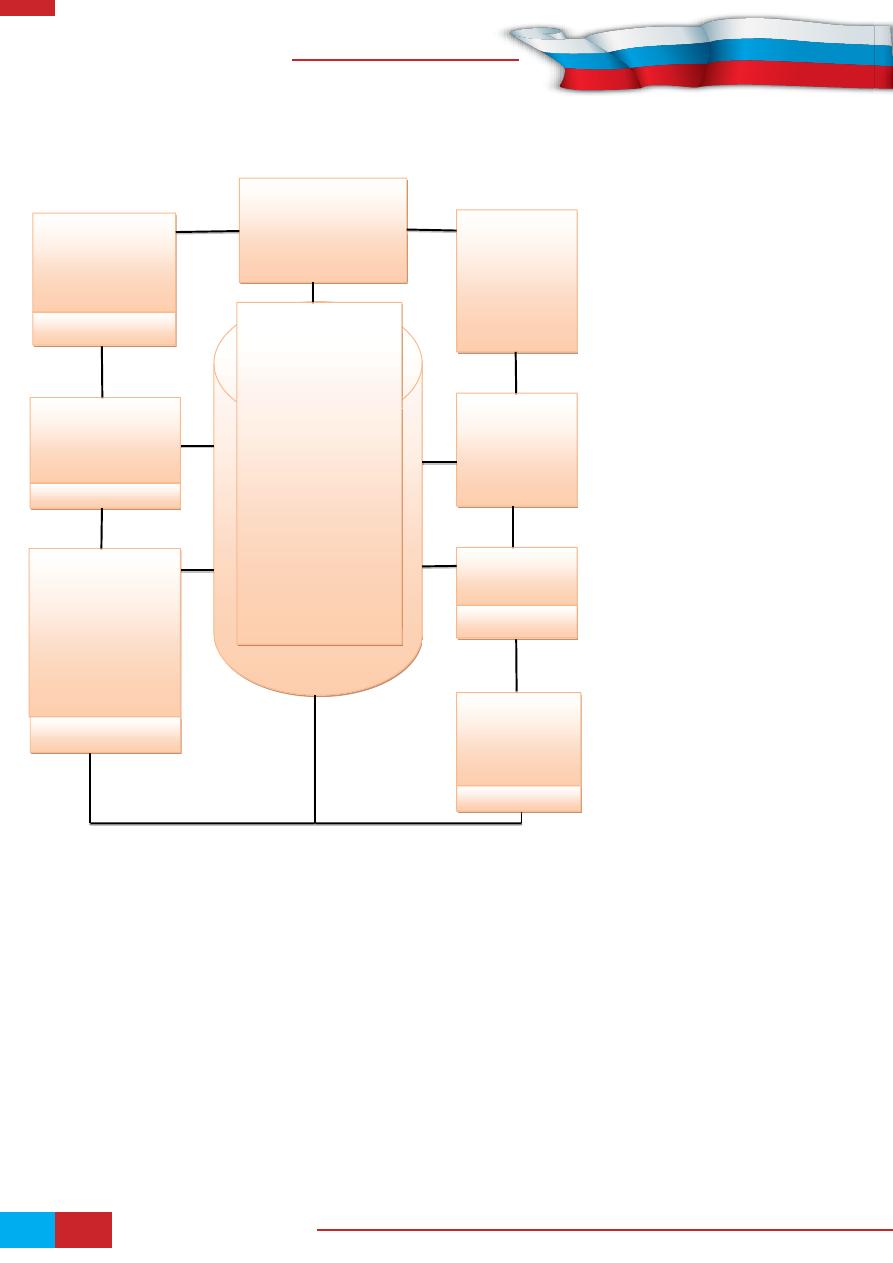
DIGEST, February, 2014
46
Guidelines
work-consuming and expensive part of construction —
the engineering one — which is created and modernized
throughout the lifecycle of facilities. In this regard it is
essential to ensure ef
fi
cient synchronization of builders’
and power engineers’ work with consideration for
required development of methods of scheduling, test
and measurement processes with the use of a modern
regulatory framework of standards, rules and practices.
There exist sets of standards the implementation of
which will enable effective management of both projects
and operation processes. Carrying out systematic works
requires use of a modern set of standards for the system
of energy ef
fi
ciency management (ISO 50001), which, by
means of energy policy, can determine the algorithm of
actions with the aim of achieving the goals set.
One of the essential standards of the industry is the fun-
damental standard IEC 61850, which includes standards
for peer-to-peer communication and client-server commu-
nication, for designs and con
fi
gurations of substations, for
test methods, as well as standards
specifying ecological and design
requirements. A distinctive fea-
ture of IEC 61850 standard is that
it gives an opportunity to various
manufacturers of equipment for the
power industry to build integrated
compatible devices. Implementa-
tion of the integrated standard IEC
61850 makes it possible to reduce
spending on design and installation
of information networks.
IEC 61850 standard was used in
developing GOST R IEC 61850-3-
2005 “Communication Networks
and Systems in Substations”. The
present standard can be applied
to substation automation systems
(S
А
S) and describes the commu-
nications between intelligent elec-
tronic devices (I
Е
D) and respective
system requirements, establishes
requirements to communication
networks, in particular to their qual-
ity, as well as requirements to the
environment, power supply sources
and recommendations on compli-
ance of the requirements to other
standards and speci
fi
cations for
substation automation systems.
Taking into account the
above mentioned, the systematic
methodical approach under
consideration based on integration
of sets of standards can be shown
with charts in Fig. 1—3. For
instance, Figure 1 shows the scheme
of an integrated system providing
for synchronization of production processes in UES, which
demonstrates close interconnections between builders,
power engineers, IT-specialists by means of standards,
regulations and rules, metrological support and a base of
regulatory and reference information. Implementation of
such an integration scheme is of special importance during
modernization and development of UES and its separate
components towards system intellectualization.
Fig. 2 shows a model of an integrated corporate base of
knowledge as well as regulatory and reference information
for users (power engineers, IT-specialists, builders and
metrologists) using references, codes and standards, various
regulations, including building codes and public health
regulations and standards, rules, standardized terms and
de
fi
nitions, classi
fi
ers of technical and economic information
(TEI), non-standardized (new) terms and de
fi
nitions. It is
demonstrated for business project management that the
interconnection between projects and their management are
carried out by means of synchronization of technological
BASE OF REGUALTORY
AND REFERENCE
INFORMATION
Federal Laws
Technical regulations
Agreements
Standards (international,
European, national)
Regulations
Indicators
Rules
Standardized terms and
defi nitions
Thesaurus
Programs
Schedules
Plans
Technological processes
Metrological support
Statistics
Analysis of
implementation
of programs,
plans, agreements
and schedules,
production processes
with regard to
fi
nancing at all
stages of lifecycle
Revealing deviations
in production
processes at all
stages of lifecycle
Self-diagnostics
Automatic self-
control of deviations
Making decisions
Automatic self-
control for
elimination of
non-fundamental
deviations
Making decisions
Fig. 3. Integrated functional system of UES control and development at all stages
of technological processes throughout UES lifecycle
Analysis of operation of
production processes of
the system, situations and
deviations.
Preparation of variants
of modernization and
development of the
system, facilities,
equipment, devices at all
stages of lifecycle
Preparation of variants of
fundamental solutions
Agreements, programs,
plans, schedules,
production processes at
all stages of lifecycle
Making decisions
Development and
modernization, adjustment
of schedules and plans of
production processes at all
stages of lifecycle
Making decisions
Monitoring, supervision and
registration of indicators,
plans, schedules and
agreements, accounting of
production processes at all
stages of lifecycle

www.eepr.ru
47
processes with implementation of existing integrated sets
of standards, including PDPPS, CALS-T, ISO 9000, ISO
14000, ISO 50001, IEC 61850 and others, as well as analysis
of statistics of various deviations of planned programs and
schedules.
The conducted analysis was used for drawing a scheme
of an integrated functional UES control and development
system with regard to intellectualization at all stages of
technological processes throughout the UES lifecycle
presented in Fig. 3. In such an integrated UES develop-
ment management system an essential feature is the need
in constant monitoring and prompt analysis of develop-
ment of international and European standardization with
the aim of ef
fi
cient implementation of foreign experience
enabling reducing money and time expenditure on devel-
opment, creation and development of facilities, devices
and other components of UES.
Another important peculiarity of such a system is
existence of various states of intelligence levels and
development of UES units and elements, in connection
with which it is necessary, while planning works, to develop
models of con
fi
guration (architecture) of equipment
generations, each of which will determine a mechanism
of UES development management in space and time with
regard to changes of equipment generations (Fig. 4).
PRIORITY DIRECTIONS OF MEASURES FOR DEVELOPING
UES INTEGRATED REGULATORY TECHNICAL
FRAMEWORK
Analyzing the state of the problem makes it possible to
determine the following priority directions of UES regu-
latory framework near-term develop-
ment:
•
activating work of Russian
standardization committees
and ensuring their interaction
with technical committees of
international and regional stan-
dardization bodies;
•
facilitating rates of interstate
standards development ensuring
compliance of products to
requirements of technical regu-
lations;
• harmonization of state supervision
rules and procedures, including
methods of assessing risk of harm
done by dangerous products;
• establishing responsibility of
the manufacturer (supplier) as
regards safety and reliability
of products launched onto the
market, certi
fi
cation
bodies
and test laboratories —
as regards accuracy of results
and suf
fi
ciency of the conducted
assessment of compliance;
•
bringing requirements to products and related
processes to compliance with international standards
and achievements of science and technology in the
fi
eld of electric power industry;
•
developing standards identical to ISO/IEC/
Е
N
standards, with regard to assessment of readiness
of the industry and test framework for their
implementation;
•
coordinating works on forming proposals for
actualization of lists of standards with the aim of
complying with requirements of technical regulations;
• increasing the level of harmonization of national
standards with international and regional standards;
• reducing terms for developing standards, including
developing preliminary standards;
• developing uniform rules and procedures con
fi
rming
compliance of products to requirements of technical
regulations;
• preemptively developing standards ensuring innovative
development of electric power industry, including
building smart grids;
• actively involving business community in the process
of development of national standards;
• forming a single system of professional training and
evaluating competence of experts of certi
fi
cation
bodies and laboratory personnel.
In conclusion, it should be noted that, in conditions of
establishment of the Single economic space and Russian
Federation’s joining WTO, improvement of the industry’s
integrated regulatory framework is an ef
fi
cient tool of
UES further development.
Fig. 4. Change of generations of systems, scientific/technical complexes
and facilities
Generation A
Generation
В
Standardization,
metrological
support
Implementation of
Generation A
Decommis-
sioning of
Generation A
Dis-
posal
of A
Research
for A
Development for A
t, time
Costs
Implementation of Generation B
Оригинал статьи: Integrated Technical Regulatory Framework at the Heart of Electric Power Industry Development
Nowadays Russia is one of the world’s major producers of electric power (more than 230 GW). The unified energy system (UES) of Russia includes about 600 power stations with generation capacity of over 5 MW each.






